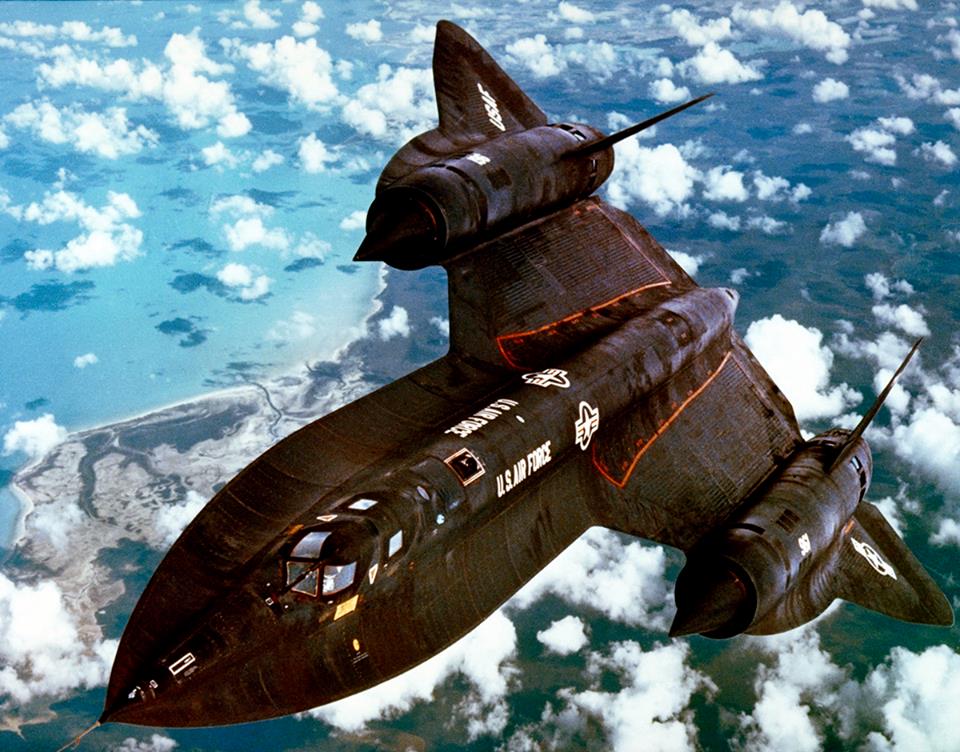“You haven’t been lost till you’ve been lost at Mach 3 because for every minute that you don’t know where you are, you’re 35 miles further away from where you think you’re supposed to be!,” Frank Stampf, former SR-71 Blackbird RSO
The following stories appear in John Altson’s book The Black Line.
Four Concurrent Emergencies on Landing
Blackbird pilot Lieutenant Colonel Bredette (BC) Thomas welcomed an assignment that would not require refueling because SR-71 air refueling was challenging and dangerous. A 45-minute flight over North Korea followed by a short trip back to Okinawa should have been simple. He had been an SR-71 pilot for nearly a year when he began his first tour in Okinawa.
In the seas close to the Okinawa base, Russian and Chinese trawlers kept watch over all US flights. It was determined that the flight would take place under radio silence and with a higher-than-normal load of 65,000 pounds of fuel due to the nature of this specific mission.

After experiencing a series of uncontrollable “unstarts” due to an engine inlet issue, BC was forced to abort the mission. He returned to Okinawa after only 20 minutes, carrying 15,000 pounds of fuel. BC’s issues were only getting started. The crew in charge of maintaining the hangar did not have time to wipe up the fuel slick on the floor since he returned to Okinawa considerably sooner than anticipated.
An SR-71 always lands with an eleven-degree nose-high attitude, lowers its nose for a soft landing, and then opens its drag parachute. Nevertheless, on this specific landing, the plane’s nose dropped, it began to veer left and right, and the right generator was destroyed. The fact that BC arrived much earlier than expected made things even harder, as the personnel ran out of time to remove the “arresting cable” off the runway. BC attempted to slow down but was unsuccessful; he blew out two of the right tires and crossed over the arresting cable.
It was customary to enter the hangar while the engines were still running and then turn them off. He entered the hangar at three miles per hour and was unable to stop the aircraft due to the oil slick. He tried the brakes, but was unsuccessful. BC was given two seconds to control the aircraft and make the decision regarding whether or not to turn off the engines. The aircraft came to a safe stop after he made a sharp right turn.
Colonel Frank Stampf’s most interesting story
The most intriguing story told by Colonel Frank Stampf, SR-71 RSO (Reconnaissance Systems Officer), involved a flight from Okinawa. The first-night operational mission that Frank and his pilot Gil Bertelson were scheduled to fly over the Korean Demilitarized Zone (DMZ) was a “bow-tie” (double loop) mission over the Korean peninsula that was planned to make several passes over the DMZ. They had just finished their obligatory ten to twelve months of crew training.
They were traveling at Mach 3 on the east side of the peninsula during a pitch-black, moonless night. Gil pointed to what looked like thousands of lights below and steered the aircraft into a 33-degree bank to the right. Given that the Korean peninsula is typically completely dark, this was extremely unusual. Although the lights were completely mysterious and disconcerting to a rookie crew flying dangerously close to some hostile zone, the navigation systems seemed to be functioning properly.
After successfully completing the mission, landing the aircraft, and receiving a debriefing from the intelligence officers, they learned that what they had actually seen was a large number of tiny Korean fishing vessels—thousands of sampans with their lanterns lit, giving the impression of a sprawling city—which was NOT what they were supposed to have seen at that particular time.
You haven’t been lost until you’ve been lost at Mach 3, as Frank was known to his SR-71 squadron mates for saying. He also developed the following corollary to the quotation: “…because for every minute that you don’t know where you are, you’re 35 miles further away from where you think you’re supposed to be!”
The Black Line is available to order here.
Photo by Lockheed Martin and U.S. Air Force

